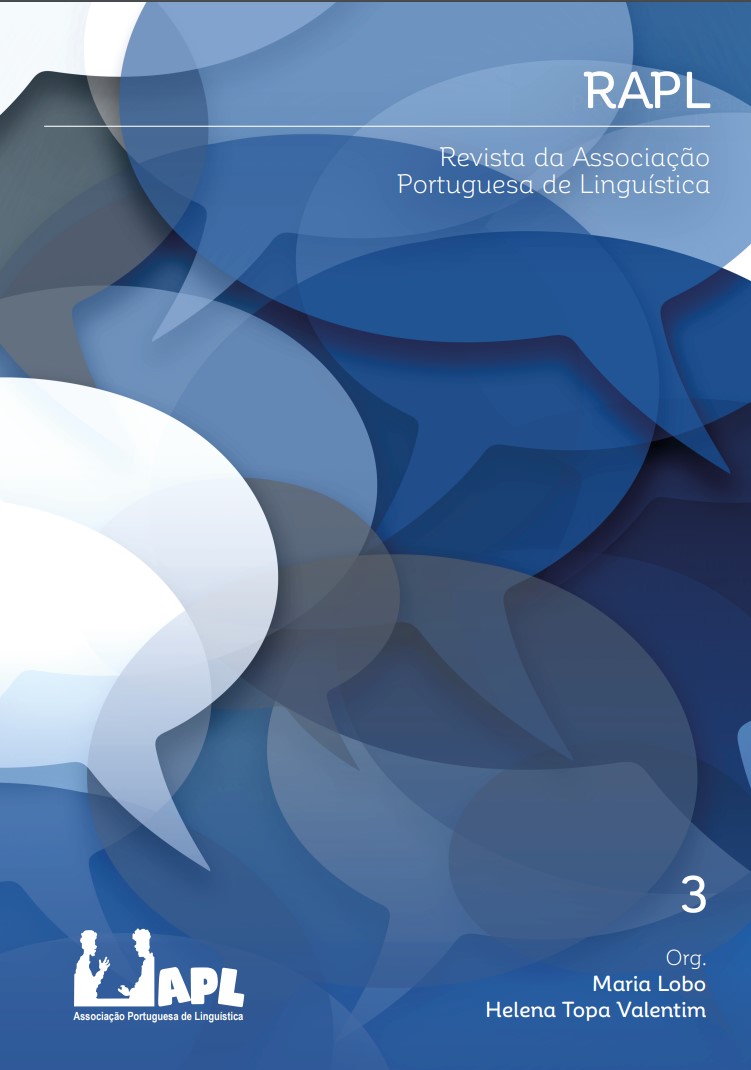O ritmo da interlíngua na produção do Português Europeu por falantes chineses
DOI:
https://doi.org/10.26334/2183-9077/rapln3ano2017a22Palavras-chave:
ritmo, interlíngua, aprendentes de português europeu, falantes nativos Mandarim, aquisição de L2Resumo
The present research examines the rhythmic properties of European Portuguese spoken by native speakers of Mandarin Chinese. Based on the rhythm metrics and corpora used in previous studies focused on the comparison across different languages and varieties (Ramus, Nespor & Mehler, 1999; Frota & Vigário, 2001), we aimed at determining the rhythmic properties of the interlanguage and discussing the factors that may shape and/or constrain the grammar of the interlanguage. We analysed the rhythmic properties of sentences produced by 6 native speakers of Chinese Mandarin, with two different levels of proficiency in European Portuguese (L2) – B1 and C2. A crosscomparison analysis with the results obtained for European Portuguese (Frota & Vigário, 2001) and for Mandarin Chinese (Lin & Wang, 2007) was also conducted. Our results showed that the rhythm of the interlanguage evolves from L1 to L2, reflecting the proficiency level in the acquisition of European Portuguese as a L2. Additionally, we also found evidence for the influence of L1 on the grammar of the interlanguage (e.g., phonological simplifying processes such as cluster reduction in syllabic onsets or coda deletion). Although exploratory, these results contribute to further understand the intermediate linguistic status between a native and a second language, thus adding to the knowledge of the L2 acquisition system.
Downloads
Downloads
Publicado
Como Citar
Edição
Secção
Licença
Direitos de Autor (c) 2017 Chao Zhou, Marisa Cruz, Sónia Frota

Este trabalho encontra-se publicado com a Licença Internacional Creative Commons Atribuição-NãoComercial-CompartilhaIgual 4.0.
Os autores mantêm os direitos autorais e concedem à revista o direito de primeira publicação. Os artigos estão simultaneamente licenciados sob a Creative Commons Attribution License que permite a partilha do trabalho com reconhecimento da sua autoria e da publicação inicial nesta revista.
Os autores têm autorização para disponibilizar a versão do texto publicada na RAPL em repositórios institucionais ou outras plataformas de distribuição de trabalhos académicos (p.ex. ResearchGate).





